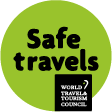DISCOUNTS Inca trail to Machu Picchu
18 - 24 years old: We offer a $20 discount per student. To qualify as a student, you must have a valid student identity card and be under 25 years of age at the time of your trip. Scan and email us the copy at the time of booking.
Under 17 years old: We offer a $20 discount per child. you must be under 18 years of age at the time of your trip (you will need to scan and email us a copy of the passports).
YES. To protect the historical trail of the Inkas, the number of people allowed to hike the Inca Trail each day is limited to 250. That is why, you should reserve your space as soon as possible. Spaces can be filled up three to six months in advance. Spaces fill more quickly in the high tourist season, from May to September.
You Book, You Go…Don’t Worry… We Won’t Cancel: While other tour companies generally cancel their trips due to low participation of travelers or pass their travelers to other big groups tour operators, we guarantee that we will never cancel a trip because of low signing-up or participation for the departure date neither get our travelers to other tour operators! This makes to our travelers the assurance and peace of mind to know their travel plans are insured and guaranteed.
Huayna Picchu is one of the mountains that stands next to Machu Picchu and has amazing views from above. This hike is done after your tour with us and takes 45 minutes to reach the top and 45 minutes to came back down. Great oportunity to take lots of photos, because of the incredible views .
The Huayna Picchu Mountain is the one that you will see just behind Machu Picchu on any postcard; the Incas paths hidden alongside the mountain, it may frighten those who have a fear of heights.
For those of you who struggle with heights you may need to know that you will be steps away from hundred foot plummets into an abyss, and in some places the path can be very steep and narrow.
There are times when you need to use security cables to support yourself; it is a challenge for anyone. If you suffer from vertigo or you have a hard time controlling your fear of heights we would recommend taking a different route. You will have to place reservations 6 months before if you would like one of the 400 available tickets to go up to the Huayna Picchu Mountain.
Machu Picchu Mountain is an unforgettable and lesser-known hike above the Machu Picchu with stunning panoramic view of the valley. Reaching the archaeological place which is only one part of the Machu Picchu experience.
The other one is climbing the summit of Machu Picch
PREPARING FOR THE INCA TRAIL TREK
We recommend that our guests spend at least 2 nights in Cusco prior to departure. This helps with acclimatization to the altitude and also provides an opportunity to explore the beautiful city of Cusco.
Travelers can feel the effects of higher altitudes as low as 6000 feet (2000 meters) above sea level. They differ in their tolerance for high altitude conditions and how their bodies react to the changes in air pressure and oxygen level. Therefore we encourage our guests to undergo appropriate preparation by regular cardio-vascular exercise, even if conduct- ed at low elevation, and to adopt a healthy, balanced diet prior to the trip.
Without at least some pre-trip training, or a good basic level of fitness, trekking is hard work. Let’s be honest – it’s very hard work ,anyway the precie for a great trek is paid in sweat. Sore calves and aching quads are badges of honor, with blisters and lost toenails marks of pride.
But in return, you get some of the most untouched, pristine and jaw-dropping scenery on the planet. And you know what? The more you train for your epic hike, the easier it’ll be. And you don’t have to be an Iron Woman/Man to climb to Andean Mountains or reach the top of Machupicchu. Apart from it. Trekking is available to anyone; you just have to be sensible and work a bit for it. There you have some of our pre top tips for your upcoming trek:
1. Start walking now (it’s never too early to start training)
This may seem like the most obvious step to start with (pardon the pun), but you’d be surprised how many people don’t do it. The best way to prepare for a really long walk? Do some really long walks. You should start with small-ish distances and work up ,to the length that you will be trekking on your trip.
When you start your training, leave a day in between each walk to let your body recover. But as your body gets fitter, try to do back-to-back sessions each day – it’ll help you build your stamina for the relentless nature of a ten-day trek, where you won’t have the luxury of rest days. Ideally, you want to be able to walk 4-6 hours – comfortably – before you leave.
2. Make leg-based cardio part of your routine…
As well as doing long walks, you should also work some leg-based cardio into your daily routine. Cycling is awesome for building up muscle in your legs, but soccer, football, squash and swimming are all great too. If you’re more into gym workouts, mix up your spin classes or cycling bursts with squats and lunges (the more weight, the better).
3. …and take the stairs every chance you get
Stair climbing is also a good one for building up calves and quads, so take the stairs instead of the lift or escalator when you’re at work or the train station.
4. Make sure you’re walking properly
You’ve been doing it since you were around one year old, but it’s super important to monitor how you’re walking and if you’re doing it correctly. Make sure you’re hitting the ground with your heel first, then rolling onto your toe, which propels you onto the next step (this will help reduce the risk of shin splints and tendon pulls – ouch). Walk with your head up, eyes forward and shoulders level.
5. Mix up your training terrain…
When you’re on your trek, it’s unlikely you’ll be walking on level footpaths and roads, so avoid training solely on level footpaths and roads. Instead, try to train on surfaces that will be similar to the trails on the trek. If you’re heading to Everest or Kili, aim to train on steep, rocky terrain and loose shale; if it’s Kokoda, try to find muddy paths. It’s really important you prepare your feet, ankles and knees for the stress they’ll experience on the trip.
6. …and walk in all types of weather
It’s also unlikely you’ll get ten straight days of perfect weather on your trek, so prepare yourself for all conditions by walking in cold, windy, rainy, warm and humid conditions (where possible, of course!).
7. Try using walking poles
When you’re navigating Kili’s gravel trails or lumbering down Dead Woman’s Pass on the Inca Trail, walking poles will become your two new best friends. They take the pressure off your knees on the downs, and give you extra support on the ups. Incorporate poles into your training sessions so you get used to walking with them.
8. Train with a backpack
On almost all of our trekking trips, you won’t be carrying your main pack, but you will need to carry a small daypack, packed with essentials like your camera, snacks, sunscreen, water and wet-weather gear. So with all your days/weeks/months of training, make sure you’re challenging yourself with a weighted bag. If you really want to push it, pack your bag with a few extras, so it’s a little heavier than what you’re planning to hike with on the trip – it’ll make the eventual trek feel like a walk in the park (chortle).
9. Keep the tank fuelled
It’s SO important you’re stocked with enough water and food during a trek (hydration is key!). Nuts, dried fruit, muesli bars and chocolate are all good, quick sources of energy and protein; keep a selection of these healthy snacks in your daypack. Also, bring along a reusable canteen; alpine streams are usually a great source of fresh water, but our guides provide boiled (and cooled) water daily throughout your trek. While you’re in training-mode, try to eat and drink ‘on the go’ as much as you can, so your body can get used to digesting during strenuous exercise.
10. Invest in a good pair of shoes
Your feet are the most crucial part of your body on this trek, and it doesn’t take much to keep them in toe-tappingly tip-top shape. First, invest in a pair of good-quality, water-resistant hiking boots; you want plenty of support and ventilation too. Then, wear them in. How do you do this? Wear ‘em everywhere. On your training runs, on walks to the shops, to work, to formal events (well, maybe not). You get the idea though; by wearing them in as much as possible in the weeks and months leading up to the trek, it’ll help avoid blisters, bunions and lost toenails. Then, stock up on a few pairs of really good hiking socks (preferably a wool/nylon blend), that will wick moisture and keep your feet dry. If you want to get a bit crazy, wear two pairs while walking to minimise your chance of blisters.
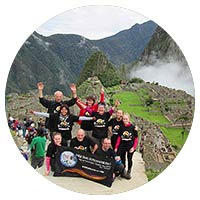
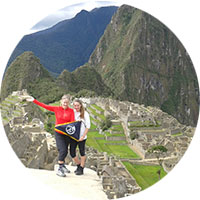
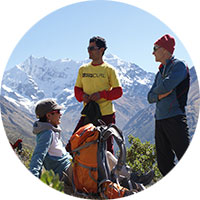
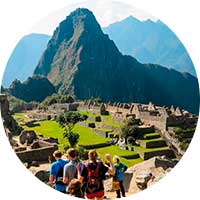
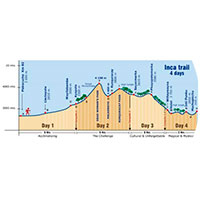
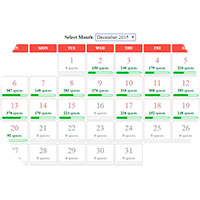










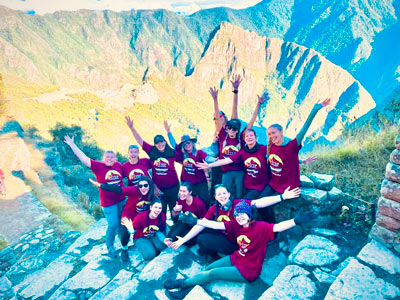
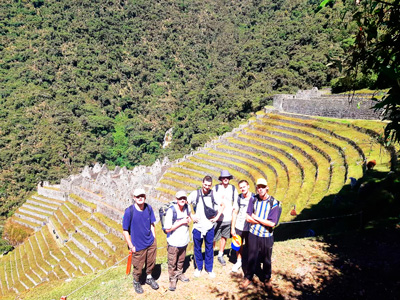
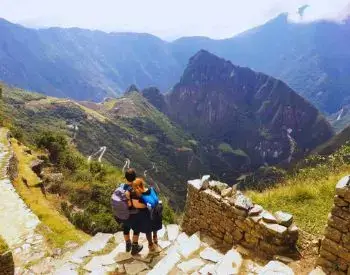
.webp)











